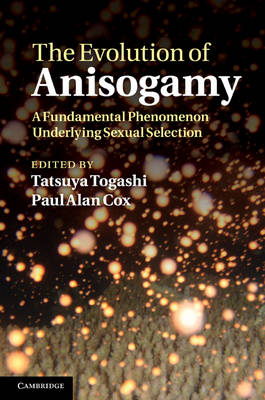
The Evolution of Anisogamy
Cambridge University Press (Verlag)
978-0-521-88095-4 (ISBN)
Darwin identified the existence of separate male and female gametes as one of the central mysteries of evolutionary biology. 150 years later, the question of why male gametes exist remains an intriguing puzzle. In this, the first book solely devoted to the evolution of anisogamy, top theorists in the field explore why gamete dimorphism characterizes nearly all plants and animals. Did separate male and female gametes evolve as a result of competition, or does anisogamy instead represent selection for cooperation? If disruptive selection drove the evolution of anisogamy, with male gametes focused on search and fusion, and female gametes provisioning the new zygote, why do some algal species continue to produce gametes of a single size? Does sperm limitation, or escape from infection, better explain the need for extremely small, highly mobile sperm? Written by leaders in the field, this volume offers an authoritative and cutting-edge overview of evolutionary theory.
Tatsuya Togashi is Professor of Marine Biology at Marine Biosystems Research Center, Chiba University, Kamogawa, Japan. Paul Alan Cox is Executive Director of the Institute for Ethnomedicine, Jackson Hole, Wyoming, USA.
Introduction Paul Alan Cox; 1. The origin and maintenance of two sexes (anisogamy), and their gamete sizes by gamete competition Geoff A. Parker; 2. The evolutionary instability of isogamy Hiroyuki Matsuda and Peter A. Abrams; 3. Contact, not conflict, causes the evolution of anisogamy Joan Roughgarden and Priya Iyer; 4. Nucleo-cytoplasmic conflict and the evolution of gamete dimorphism Rolf F. Hoekstra; 5. Adaptive significance of egg size variation of aquatic organisms in relation to mesoscale features of aquatic environments Kinya Nishimura and Noboru Hoshino; 6. Gamete encounters David B. Dusenbery; 7. Evolution of anisogamy and related phenomena in marine green algae Tatsuya Togashi and John L. Bartelt; Index.
| Zusatzinfo | 2 Tables, black and white; 11 Halftones, unspecified; 63 Line drawings, unspecified |
|---|---|
| Verlagsort | Cambridge |
| Sprache | englisch |
| Maße | 157 x 235 mm |
| Gewicht | 540 g |
| Themenwelt | Naturwissenschaften ► Biologie ► Evolution |
| ISBN-10 | 0-521-88095-5 / 0521880955 |
| ISBN-13 | 978-0-521-88095-4 / 9780521880954 |
| Zustand | Neuware |
| Informationen gemäß Produktsicherheitsverordnung (GPSR) | |
| Haben Sie eine Frage zum Produkt? |
aus dem Bereich


